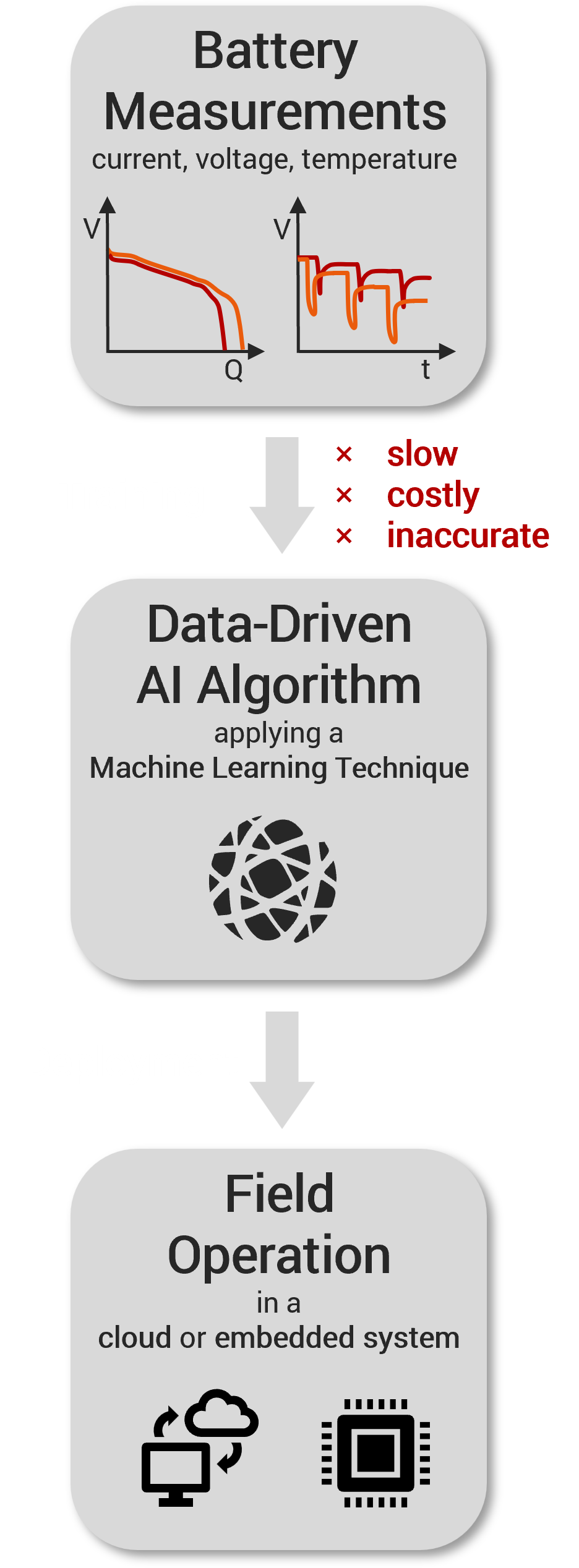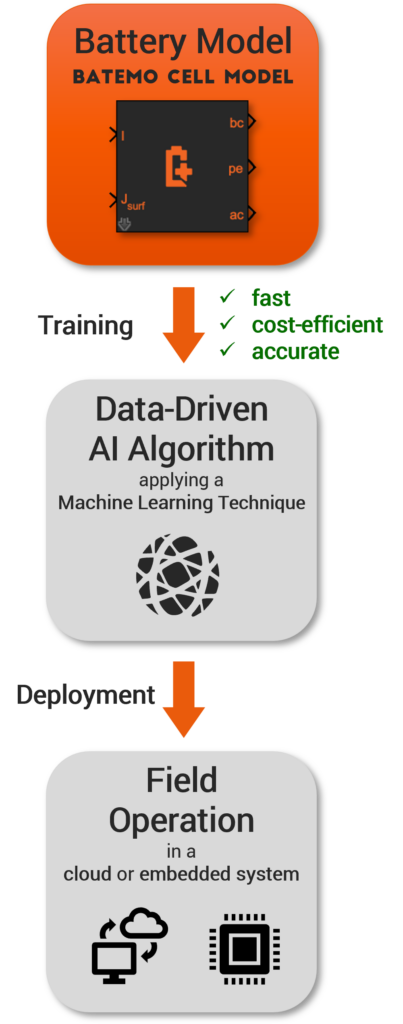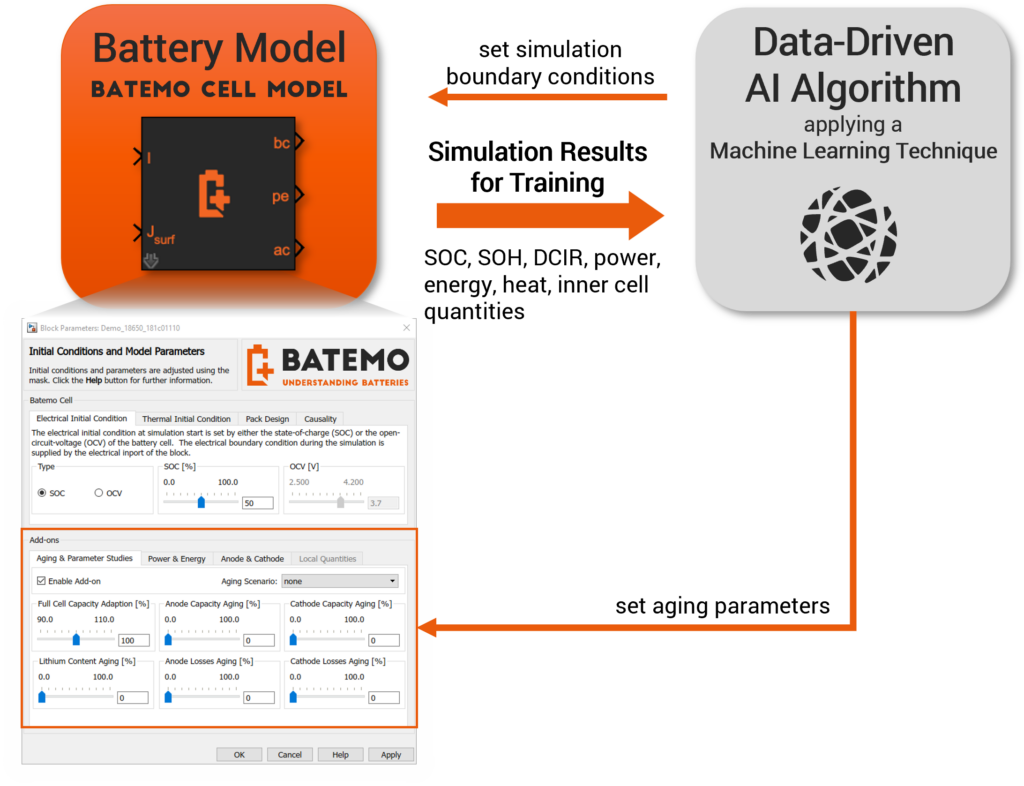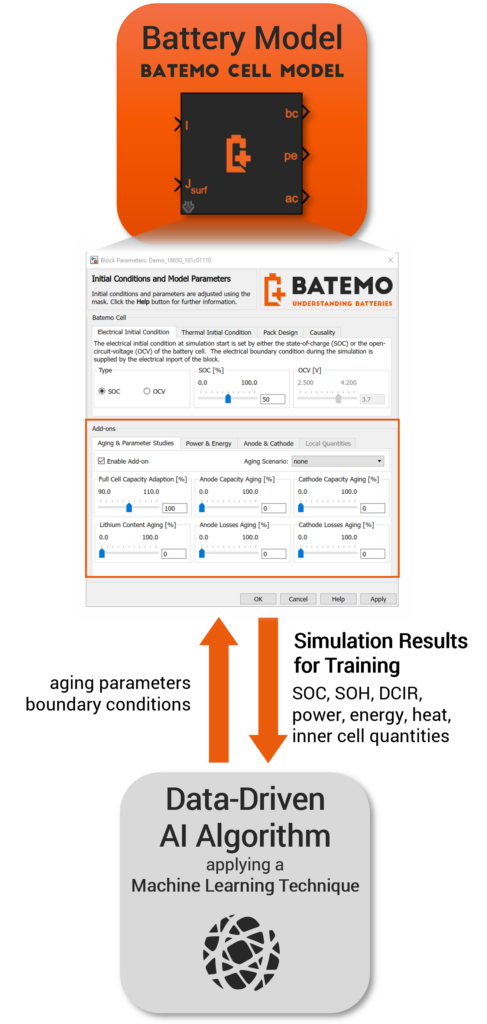Do you Build AI Models?
Train them with batemo!
Challenge


- Does my AI algorithm track the state of charge correctly, even under extreme conditions?
- How accurately does my AI estimate the state of health?
- How do I ensure that my AI is not biased from imbalanced battery training datasets causing over- or underfitting?
- How can my AI generate interpretable results that provide insights into the physical battery state?
- How do I know if I fed sufficient data so that model predictions are robust?
Solution - Battery AI Training
Fast
Physical
Accurate


-
Get a Batemo Cell Model from the Batemo Cell Model Library or we create a Custom Cell Model specifically for you.
-
Integrate the cell model into your preferred simulation environment for developing your AI innovations.
-
Use software-in-the-loop development methods to train your AI algorithm based on the Batemo Cell Model as high-precision physical core model. Run fully automated training routines by letting the AI model control the boundary conditions and parameters of the cell model simulations. Compare the predictions of the data-driven model against synthetic validation sets from the high-fidelity physical model to assess accuracy and generalizability.
-
As a final step, you move to field operation. Because the Batemo Cell Model is valid, you can expect straight-forward AI operation in the field.








